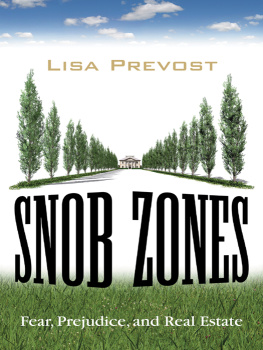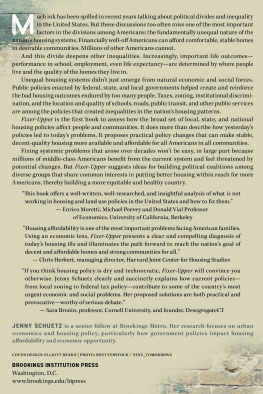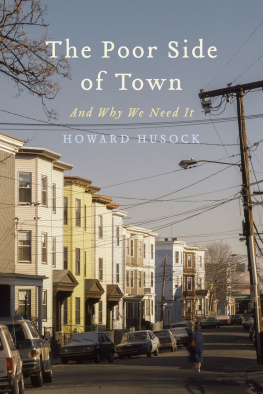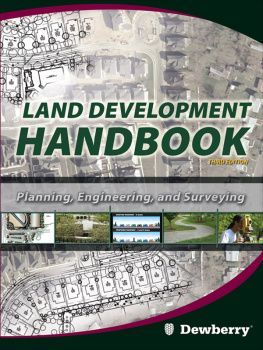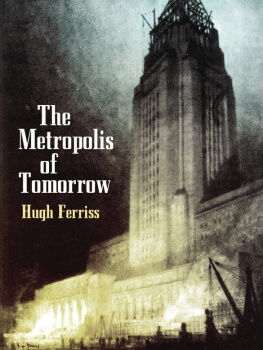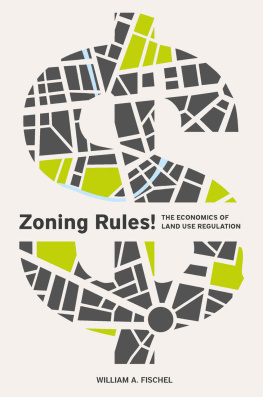Americas Frozen Neighborhoods
Americas Frozen Neighborhoods
The Abuse of Zoning
Robert C. Ellickson
Yale UNIVERSITY PRESS
New Haven and London
Published with assistance from the Louis Stern Memorial Fund.
Copyright 2022 by Robert C. Ellickson.
All rights reserved.
This book may not be reproduced, in whole or in part, including illustrations, in any form (beyond that copying permitted by Sections 107 and 108 of the U.S. Copyright Law and except by reviewers for the public press), without written permission from the publishers.
Yale University Press books may be purchased in quantity for educational, business, or promotional use. For information, please e-mail (U.K. office).
Set in 10.5/14.5 Galliard by Newgen North America.
Printed in the United States of America.
Library of Congress Control Number: 2022930667
ISBN 978-0-300-24988-0 (hardcover : alk. paper)
A catalogue record for this book is available from the British Library.
This paper meets the requirements of ANSI/NISO Z39.48-1992 (Permanence of Paper).
10 9 8 7 6 5 4 3 2 1
To the memories of Charles M. Haar,
Jane Jacobs, and Raymond Vernon
Contents
Preface and Acknowledgments
Local zoning measures, to the surprise of many, may be the most consequential regulatory program in the United States. Numerous social scientists have found that local barriers to housing production elevate housing costs and distort household migration decisions. Nonetheless, members of the mass media tend to regard anything that happens at a city hall as unworthy of attention. Thanks to the efforts of many of those cited in this book, zoning seems finally to be drawing the scrutiny it deserves. This work describes local zoning practices in three metropolitan areas: Silicon Valley, Greater New Haven, and the northwestern sector of Greater Austin, Texas. The internet, and the big data that it has spawned, enabled the undertaking.
Lynsey Gaudioso, a former Yale Law School student, inspired this work. In spring 2014, I taught at Yale Law School, for the first and only time, a seminar named Suburbs. Lynsey, then a first-year student, enrolled. She wrote a paper that empirically examined the zoning practices of New Haven suburbs. Her paper opened my eyes to what a scholar could accomplish, after the advent of big data, in depicting zoning patterns. But for Lynsey, I would never have undertaken this book.
I have resided for many years in two of the three metropolitan areas that I ended up studying. During most of the 1980s, I was a member of the Stanford Law School faculty and lived in Silicon Valley. My family resided in a Palo Alto neighborhood known as Old Palo Alto. In 1988, I accepted an invitation to join the faculty of Yale Law School, a school from which I had graduated in 1966. Since the move to Yale, I have lived a majority of my adult life in Greater New Haven, Connecticut. On arriving from the West Coast, I first moved to Woodbridge, one of New Havens most exclusionary suburbs, and later to East Rock, a neighborhood in the City of New Haven itself.
Greater Austin, outside of a few visits, I knew far less well. I am especially grateful to Lynn Baker and Andrew Kull, members of the faculty at University of Texas Law School, for helping open doors in Greater Austin. Two of my Yale Law colleagues, Daniel Markovits and Gerald Torres, lived in Austin for many years. They also helped introduce the area to me.
Most books, even those by a single author, are largely group efforts. I received help on many fronts. As has become a law school tradition, I have presented portions of this book at various law school workshops. Participants at each provided valuable feedback. Three were law-and-economics workshops. I thank Steve Shavell, coordinator of the Harvard Law School Law and Economics workshop, who rightly prodded for improvements in the paper I presented there. Thanks also to Lee Anne Fennell, coordinator of the University of Chicago Law and Economics workshop, and Mitch Polinsky, coordinator of Stanford Law Schools workshop. Two of my presentations were to general faculty workshops. Lynn Baker helped arrange one at the University of Texas Law School, and Gideon Yaffe did the same at Yale Law School. I also presented some of my findings at a superb conference on exclusionary zoning that John Infranca convened, in November 2019, at Suffolk University Law School in Boston.
Three colleagues at Yale Law SchoolAnika Singh Lemar, Jay Pottenger, and David Schleicherare intensely interested in the issues that exclusionary zoning poses. I have benefited from conversations with each. David strives, as few law professors do, to keep up with developments in both economics and political science. In fall 2021, he at last is offering a Yale Law School course in Property law, a course suited to his central substantive interests. As the chapter on state land use reforms. Rich Schragger, who supports unfettered local government discretion far more than I do, provided feedback on the entire manuscript.
Several former Yale Law School students have authored many of the best recent works on exclusionary zoning. Eric Biber and Chris Elmendorf have emerged as leading analysts of the complex legal situation in California, the state with the most astronomic housing prices in the United States. In early 2021, Sara Galvan, invariably indefatigable, published the Connecticut Zoning Atlas, a landmark study of local practices throughout the state. Owen Jones and Lior Strahilevitz also offered useful advice along the way. Douglas Melamed and Alex von Hoffman, two scholars without Yale Law School ties, provided help as well.
The staffs of local zoning agencies were consistently willing to let me examine copies of their early zoning ordinances and maps. I limit my thanks to two especially helpful individuals in each of the three metropolitan areas: in Silicon Valley, William Chui of Redwood City and Amy French of Palo Alto; in Greater New Haven, Harry Smith of Branford and Kristine Sullivan of Woodbridge; and in northwestern Austin, Paul Frank of the City of Austin and Megan Will of Bee Cave.
Bob Nelson of Accomac, a rustic town on the Eastern Shore of Virginia, prepared the five maps. My thanks to Bill for his admirable patience in educating me about the mapmaking process.
I carried out about half of my research on, of all places, the Left Bank of Paris, France. Because the internet has made big data available worldwide, geographical constraints matter far less than they once did. I am indebted to the series of French scholars who generously provided me a Paris desk in the late 2010s. They were, in order, Christophe Jamin of the Sciences-Po Law School, Etienne Wasmer of LIEPP and the Sciences-Po Economics Department, Denis Baranger and Olivier Beaud of Paris II School of Law, and Rozen Noguellou of GRIDAUH and the Paris I School of Law.
Law faculty tend to be laggards in technology. Yale map librarian Stacey Maples first introduced me to ESRIs ArcGIS program, and Miriam Olivares later trained me in the basics of that system. Chris Rappa of the South Central Connecticut Regional Council of Governments provided a database that greatly simplified my analysis of zoning in Greater New Haven. Jordan Peccia, of the Yale University Civil Engineering department, advised on decentralized methods of wastewater treatment.
The book cites many obscure sources. The staff of Yale Law School library consistently provided yeoman service in uncovering them. Among many others, I pay special tribute to Julian Aiken and Maryellen Larkin. I could not have completed the book without the services of Gerard Armoogam of Yale Law Schools IT department. Gerard regularly updated the laptops that I took to Paris when conducting the research, and he rescued me from crises on numerous occasions.


